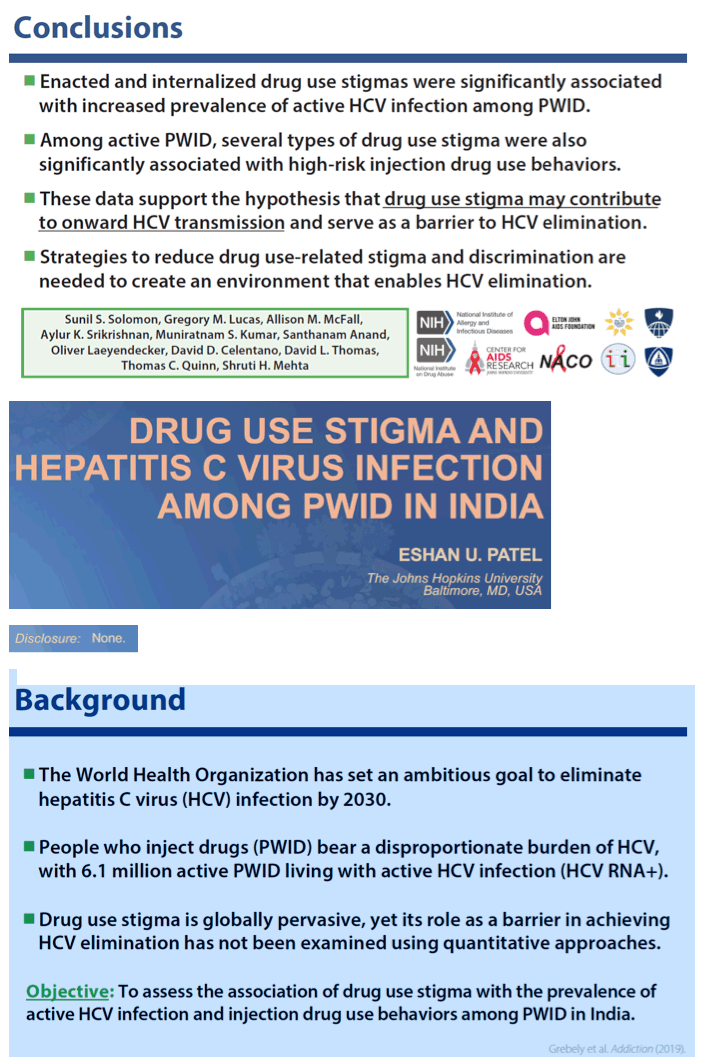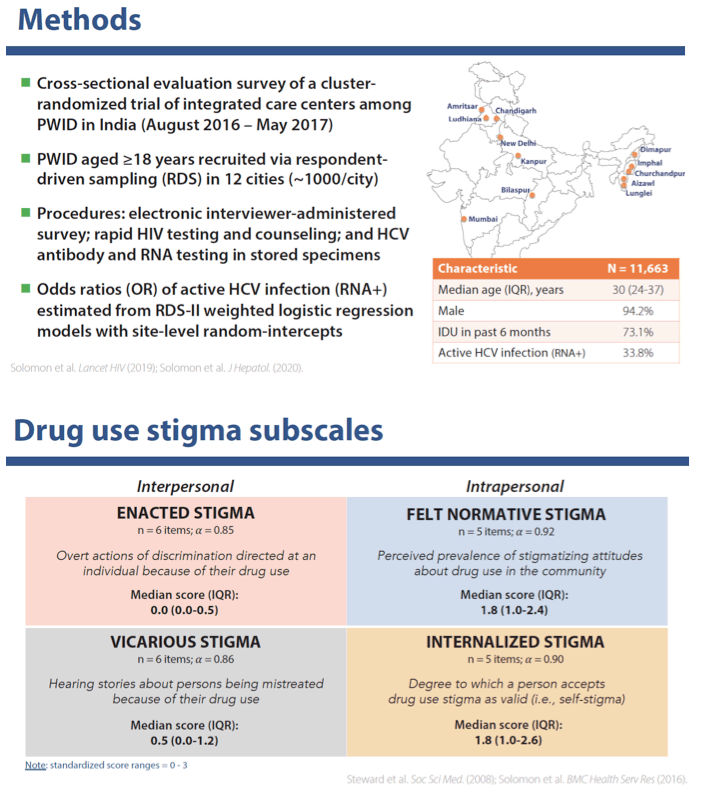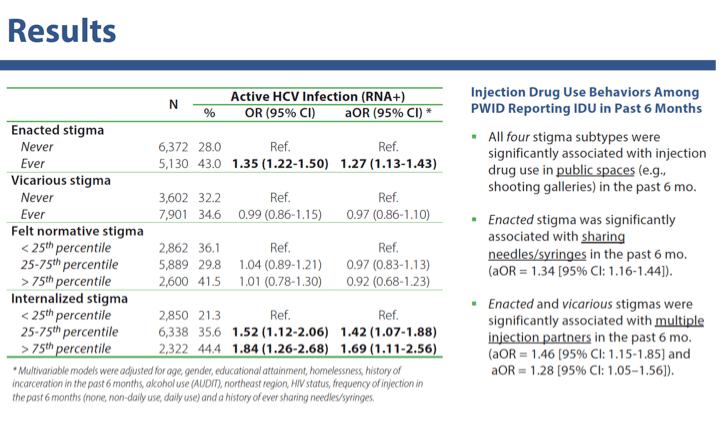 |
 |
 |
| |
DRUG-USE STIGMA AND HEPATITIS C VIRUS INFECTION AMONG PWID IN INDIA
|
| |
| |
CROI 2021 March 6-10 Reported by Jules Levin
Eshan U . Patel1, Sunil S. Solomon1, Gregory M. Lucas1, Allison M. McFall1, Aylur K. Srikrishnan2, Muniratnam S. Kumar2, Oliver Laeyendecker3, David C. Celentano1, David L. Thomas1, Thomas Quinn3, Shruti H. Mehta1
1The Johns Hopkins University, Baltimore, MD, USA, 2YR Gaitonde Center for AIDS Research and Education, Chennai, India, 3National Institute of Allergy and Infectious Diseases, Baltimore, MD, USA
Background: Although drug use stigma is globally pervasive, empirical evidence of its role in hepatitis C virus (HCV) transmission is limited. We measured the association between drug use stigma and active HCV infection among community-based people who inject drugs (PWID) in India.
Methods: Between 8/2016 and 5/2017, a cross-sectional sample of PWID was recruited from 12 Indian cities (~1000/city) using respondent-driven sampling. Participants were ≥18 years old and reported injection drug use (IDU) in the past 2 years. Four domains of drug use stigma were examined (internalized, felt/normative, vicarious, and enacted) with 5-6 items/domain. Each subscale had a range of 0-3 with higher scores reflecting greater stigma (Cronbach's α: 0.85-0.92). For each subscale, multivariable logistic regression with a random- intercept for each city was used to estimate adjusted odds ratios (aOR) of active HCV infection (RNA>30 IU/mL). Analyses incorporated RDS-II weights.
Results: Of 11,663 participants (median age: 30 years; 94.2% male), 73.1% reported IDU in the past 6 months and 33.8% had active HCV infection. The median score for both the internalized stigma and felt/normative subscales was 1.8; 69.1% endorsed a vicarious stigma item and 39.3% endorsed an enacted stigma item. Reporting any vicarious and enacted stigma was positively associated with a history of needle-sharing (aOR=1.29 [95%CI=1.04-1.59] and aOR=1.52 [95%CI=1.26-1.83], respectively), independent of age, gender, education, homelessness, incarceration, alcohol dependence, and HIV status. PWID reporting any enacted stigma had significantly greater odds of active HCV infection (aOR=1.18 [95%CI=1.04-1.33]), as did PWID with internalized stigma scores in the highest quartile (vs. lowest quartile; aOR=1.62 [95%CI=1.09- 2.40]), independent of age, gender, education, homelessness, incarceration, alcohol dependence, frequency of IDU, ever sharing needles, ever participating in medication for opioid use disorder or syringe service programs, and HIV status.
Conclusion: PWID reporting enacted and internalized drug use stigma were significantly more likely to be living with HCV infection, suggesting stigma may play a role in HCV transmission and impede efforts to achieve HCV elimination. Strategies to reduce drug use-related stigma and discrimination are warranted.



|
| |
|
 |
 |
|
|